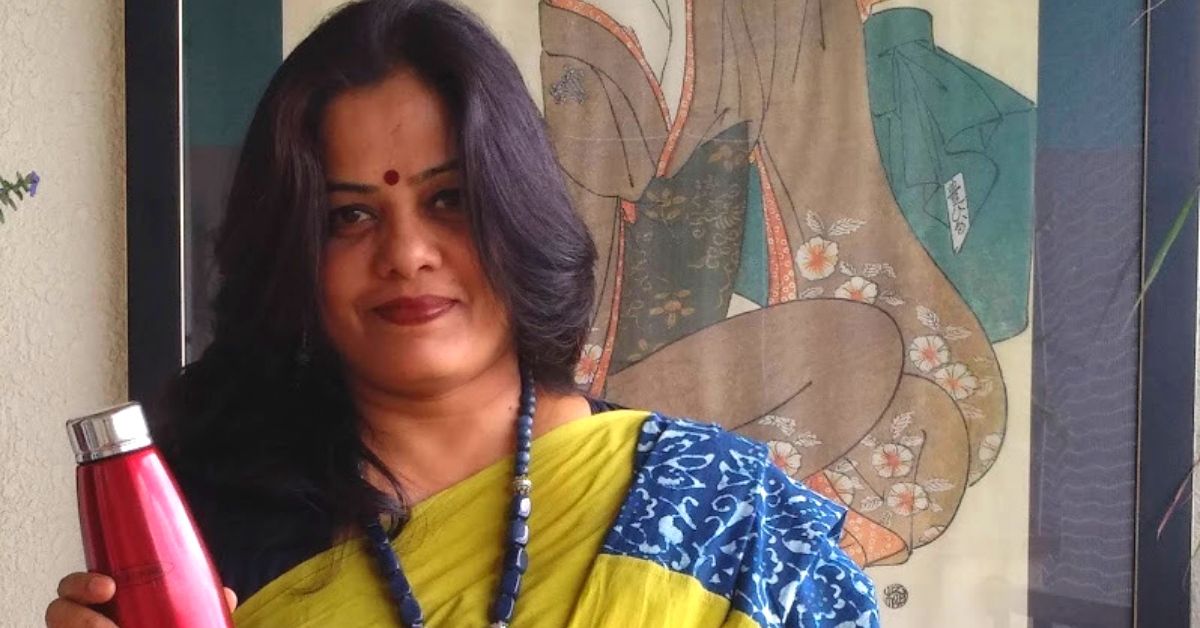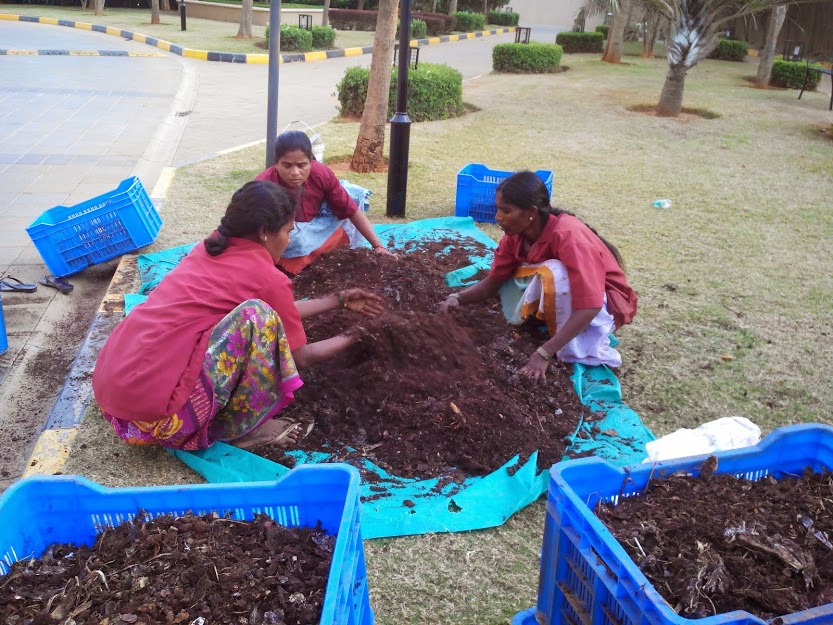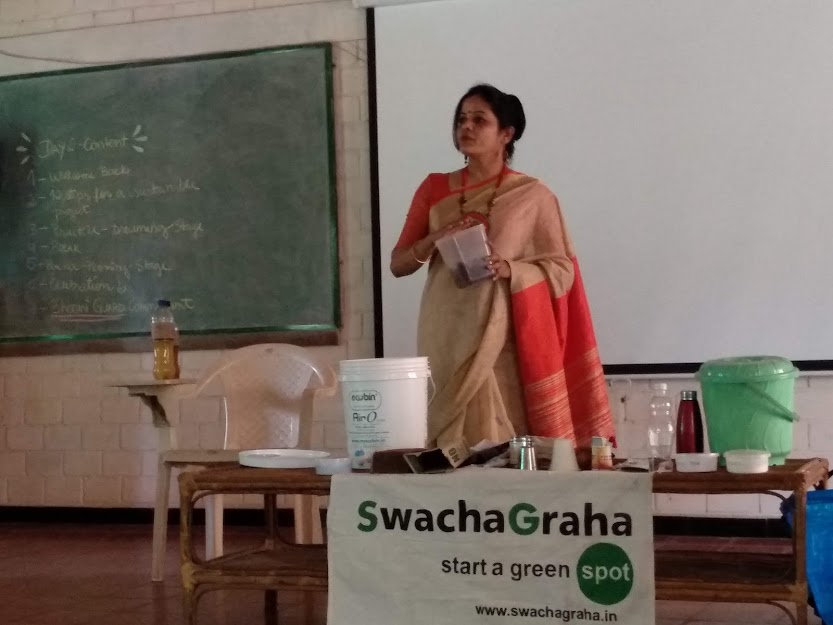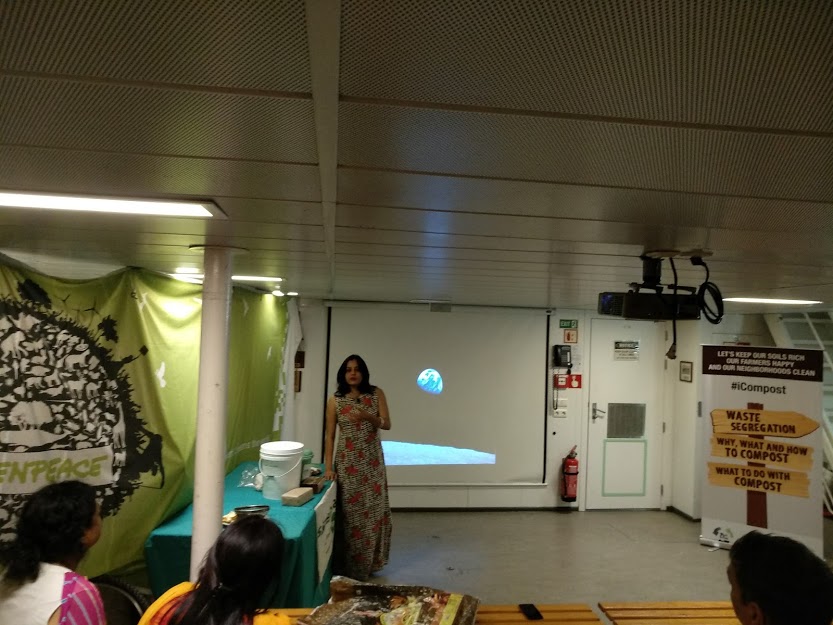B’luru Woman Helps 200+ Families Manage Waste, Stops 120 Tonnes From Reaching Landfills!
Mismanagement of waste is a common issue across metropolitan cities due to a rise in population and inadequate infrastructure. Thanks to citizen led initiatives like Savita’s, people are now willing to manage their own waste

Back in the late 90s, when cities like Mumbai and Delhi were witnessing rapid development, Karnataka’s capital city became everyone’s great escape from the crowds and extreme climatic conditions.
The people came and it did not take much time for the city to split at its seams And then came the flood of problems associated with each growing metropolis.
Once hailed as the country’s Garden city, Bengaluru has unfortunately now been reduced to the garbage city of India. One of the reasons cited by experts to a rise in the garbage crisis is population which has now risen to eight million from the three million in 1999. This has put a tremendous amount of pressure on the landfills and municipality.
While people are a part of the problem, they can also be the solution. With this belief, Savita Hiremath from Bengaluru has embarked on a mission to make waste management a part of people’s daily routine.
It all started in 2012 when the Bruhat Bengaluru Mahanagara Palike (BBMP) made it mandatory for the residents and commercial establishments to practice source segregation.
Like most of the residential complexes, Sobha Althea in Yelahanka also tried its hand at segregation and decided to start in-house composting. However, it needed more work.
Being a resident of the complex and a leading member of Solid Waste Management Round Table (SWMRT), Savita stepped up and took charge of the system.

Speaking to The Better India (TBI) she says,
Four years before shifting to Sobha Althea in Yelahanka, I started practicing waste segregation at Brigade Regency in Malleswaram. I used to segregate it into six categories. Initial days were tough but eventually it became a habit. The sight of segregated waste is beautiful
At Sobha Althea, the society committee gave Savita the freedom to experiment with different composting methods. Despite having a full-time job, she dedicated herself to the cause and tried six different methods of scientifically processing the waste.
“From learning DIY methods, vermicomposting to requesting people to segregate waste in more than two categories, we explored several options. We also had to be careful with the people as they were already segregating their waste into two kinds. More pressure would have backfired,” Savita, a journalist by profession, says.
While she was researching for the best options, Savita also made sure to exploit the social media. It was on one of the online groups where she came across Reap Benefit.
The company was looking for someone to help them try out their new compost culture and document the progress of their product for close to a month. Savita and her team sourced the culture and thus began their community-composting experiment.
“It was not challenging to convince the 200 families once I told them about my old apartment’s success,” says Savita.
Instead of hiring a contractor to manage the composting unit, Savita roped in the building’s housekeeping staff to make the process self-sustainable.
While researching, I came across multiple buildings who purchased the machine and the contractor hired was either not doing his job properly or would leave the job. In case of the latter, the residents would be left hanging, says the 45-year-old.
Savita trained around 14 housekeepers in segregating the dry waste and processing the wet waste in the newly purchased unit. The staff is divided into three teams and functions on shift basis.

After all the household waste is collected by the staff, the waste undergoes a second round of segregation where dry waste is further divided into 21 categories including plastic, paper, e-waste, glass and so on.
Depending on the volume of dry waste, every once or twice in a month, it is sold to a local recycler who sells it to plastic and paper factories as raw material. The money collected is given to the housekeeping staff as an incentive.
The wet waste is shredded in the shredder for 15 minutes after which it is mixed with culture and and placed in milk crates. It takes around 3 weeks for the compost to turn into organic manure. As for sanitary waste, it is given to an incinerator company.
The manure soon replaced the pesticides that were used to maintain the complex garden.
A significant improvement was observed in terms of health of the plants. Earlier the dogs used to get blisters when they rubbed their back on the lawns and the leaves had a burnt colour to it. Now, they have an earthy smell and the shade of colour green has become more beautiful, says Savita.
Among the series of transformation, people’s behaviour towards garbage also changed.
“Children are quite clued these days and that makes segregation easier. The challenge is to ensure that domestic help is on board and that they understand and practice it. To a large extent, this was managed by the training that the green committee of our apartment complex had done. Yet at the household level, I do keep a vigil especially when the guests who have no clue about segregation visit. It isn’t too difficult if you are committed to it,” Sita Vasudevan De, a resident tells TBI.
The outlook towards non-biodegradable waste also changed as the residents ditched plastic cutlery and switched to eco-friendly ones during society’s social gatherings.
We reinforced the idea that what we take from the soil should go back to the soil. The residents now connect with nature more and feel responsible towards it. In fact waste has increased community bonding, says Savita.
200 families generate around 6-7 tonnes of kitchen waste every month that further produces 2 tonnes of manure. The society also prevents close to 120 tonnes of waste from entering the landfill per year.
It ss considered a zero-waste community despite the unrecyclable waste which has no destination, says Savita.
The entire journey has been documented by Savita on her blog ‘Endlessly Green’. On her blog, Savita has also reviewed close to 20 composting units available in the market for people to make a choice according to their needs. Her other columns include organic gardening and community and home composting.
As the residents started sharing the success online and offline, Savita received several enquiries on solid waste management.
Savita gets invited by a number of communities to study their waste mechanisms and help them improve the same. Initially, she assessed it for free but has recently opened a consultancy to help communities go green with minimal cost.

One of Savita’s successful trips was at the Purva Venezia residential complex. She helped 1300+ flats process waste source.
Awareness among the residents regarding waste existed but implementation was missing. That is when Savita stepped in. Her inputs on segregation and collection of waste helped and motivated the residents. We have replicated her apartment’s model here. She assured us that it is a doable thing and for that we are grateful to her, Padma Patil, a resident of Purva Venezia tells TBI.
Through SWMRT, Savita has also collaborated with city-based waste solution vendors and the BBMP to convince residents to practice waste segregation. The citizen-driven group regularly organises meetings with vendors where they put up stalls giving solutions on BBMP premises.
Key to Waste Management Is Community Involvement

Savita strongly believes that garbage crisis has to be fought at multiple levels and is not one person or one organisation’s job.
If a few hundred residents cannot manage their own waste then how can they expect the BBMP to manage entire city’s waste? It is unfair and practically not possible. If we leave everything on the municipality then god knows how many decades it will take to get rid of landfills. We have to treat waste problem like the water scarcity issue and act accordingly, says Savita.
As a multi-pronged solution, Savita proposes that each household practice in-house composting and have society composting as a backup. If there is no space for the unit then a couple of complexes should unite and indulge in community composting.
Way Forward

Along with SWMRT, Savita recently launched SwachGarha Compost Connect that aims at connecting farmers with residential complexes that produce huge amount of nutrient-rich manure.
Our aim is to connect the urban compost producers with farmers farming in and around Bengaluru. Many communities are sitting with stockpiles of nutrient-rich compost even after using it for their gardens. More than 25-30 apartments have come forward to sell their compost at a nominal price. However, many farmers have misconceptions about urban compost and we aim to change that, says Savita.
Mismanagement of waste is a common issue across metropolitan cities due to a rise in population and inadequate infrastructure. Thanks to citizen-led initiatives like Savita’s, people are now willing to manage their own waste. While it is a sign of progress we have a long way to go before a concrete change is recorded.
If you wish to get in touch with Savita Hiremath, you can write to her at: [email protected]. Visit her blog here.
Also Read: Harvest Rain or Pay Higher Water Bill: DIY App by Bengaluru’s Rainman Can Help!
(Edited by Saiqua Sultan)
Like this story? Or have something to share?
Write to us: [email protected]
Connect with us on Facebook and Twitter.

Similar Story

Bengaluru’s Rain Nightmare: ‘Zenrainman’ Shares 6 Ways to Stop Floods from Repeating
S Vishwanath, a civil engineer and urban-regional planner with over three decades of experience in the water and sanitation sector explains what Bengaluru must do to prevent flooding and water-logging.
Read more >
If you found our stories insightful, informative, or even just enjoyable, we invite you to consider making a voluntary payment to support the work we do at The Better India. Your contribution helps us continue producing quality content that educates, inspires, and drives positive change.
Choose one of the payment options below for your contribution-
By paying for the stories you value, you directly contribute to sustaining our efforts focused on making a difference in the world. Together, let's ensure that impactful stories continue to be told and shared, enriching lives and communities alike.
Thank you for your support. Here are some frequently asked questions you might find helpful to know why you are contributing?


This story made me
-
97
-
121
-
89
-
167












